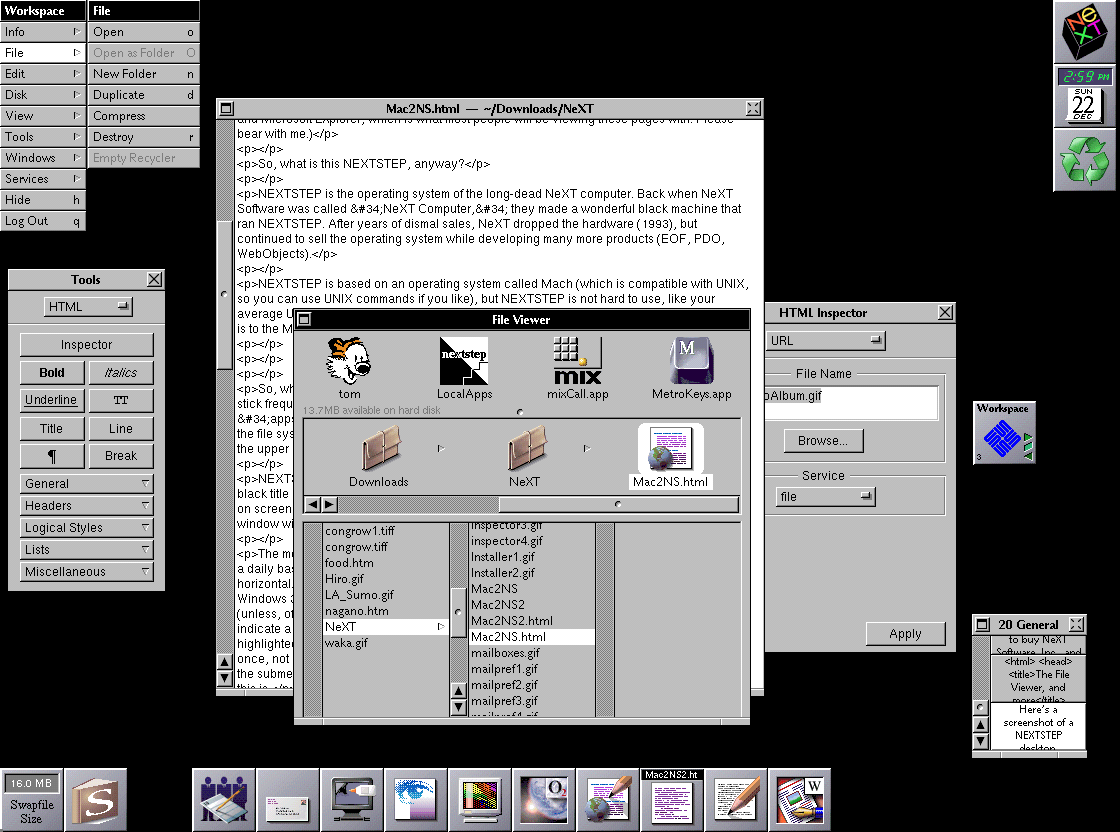One respect in which X10 was ahead of its time was in being among the first GUI engines (and the first widely-deployed one) to support color on a high-resolution display. In 1986 this was a engineering for a demand that barely existed yet; high-resolution color displays were rare and expensive hardware.
The mainstream acceptance of color displays was one of those pervasive technology adoptions that, like cellphones or video games, can become curiously difficult to remember the dates of even if one lived through it. After the fact, it seems like color displays have always been there. But, in fact, they did not become common on machines with the computing power to support a GUI until five years after the release of X10 — nearly twenty years after the original Alto.
More precisely, though monitors that were capable of both resolutions at or above 10,000 pixels and color began appearing on top-of-the-line workstations around the time of X10 in 1986, they remained too expensive for mass-market machines until around 1992. Early personal computers like the Apple II jumped one way, supporting command-line interfaces in low-resolution color on conventional TV displays. Machines positioned as “workstations” or high-end business machines jumped the other, following the Alto/Star lead to a custom-built high-resolution black-and-white display. But there were exceptions; the original Macintosh was black-and-white, because part of its charter was supporting word processing and WYSIWYG printing. And the original IBM PC tried to cover both markets by supporting a high-resolution green-screen monitor in their base system with an option for a low-resolution 16-color monitor.
Early Unix workstations running X opted for the black-and-white side of this fork, following the precedent set by serial-line VDTs and the Alto. But pressure to support color mounted steadily. Customers wondered, quite reasonably, why arcade video games and tiny 8-bit personal computers could throw a rainbow on the screen but much more sophisticated and expensive systems with mice and GUIs could not.
Next, Inc, a workstation manufacturer launched in 1988 by Apple cofounder Steve Jobs and others, marketed its designs around the promise of combining high resolution and color in a sytem that mated Macintosh-like UI polish with Unix power. But they moved a few years too soon; the technology to fulfil that promise at promised levels of price and quality was not quite ready. Limited-production prototypes attracted rave reviews and considerable loyalty from early adopters, but the hardware line was years late to market and not a success. Next exited the hardware business in 1993.
After 1989, PC and workstation vendors threw enough demand at the monitor manufacturers to buy a solution to this problem. Increasing standardization around the PC helped, and change came more rapidly the with the emergence of an entire tier of vendors producing commodity 386 machines. By 1991 high-resolution color had begun to appear on entry-level workstations and the newer 32-bit business machines, and it was obvious that continuing price trends would soon push it downwards into consumer PCs.
For a brief period in the early 1990s, even serial VDTs grew color capability in an effort to compete with networked PCs. The last gasp of the VDT industry was a tiny box called the Dorio with a PC keyboard and monitor connectors one one side and a serial port on the other, designed to turn commodity PC parts (manufactured with economies of scale the VDT vendors could no longer match) into a capable but inexpensive color VDT. The product was clever but doomed. Bit-mapped graphics, color, and direct-memory-mapped displays like the Altos won the day. With them, so did the GUI.
The long transition to color left GUI designers with the Rule of Optional Color: Don't convey critical information in color without also expressing it as shape, position, or shading. This is still good practice today, since slightly more than 10% of the population has one form or another of color blindness.
